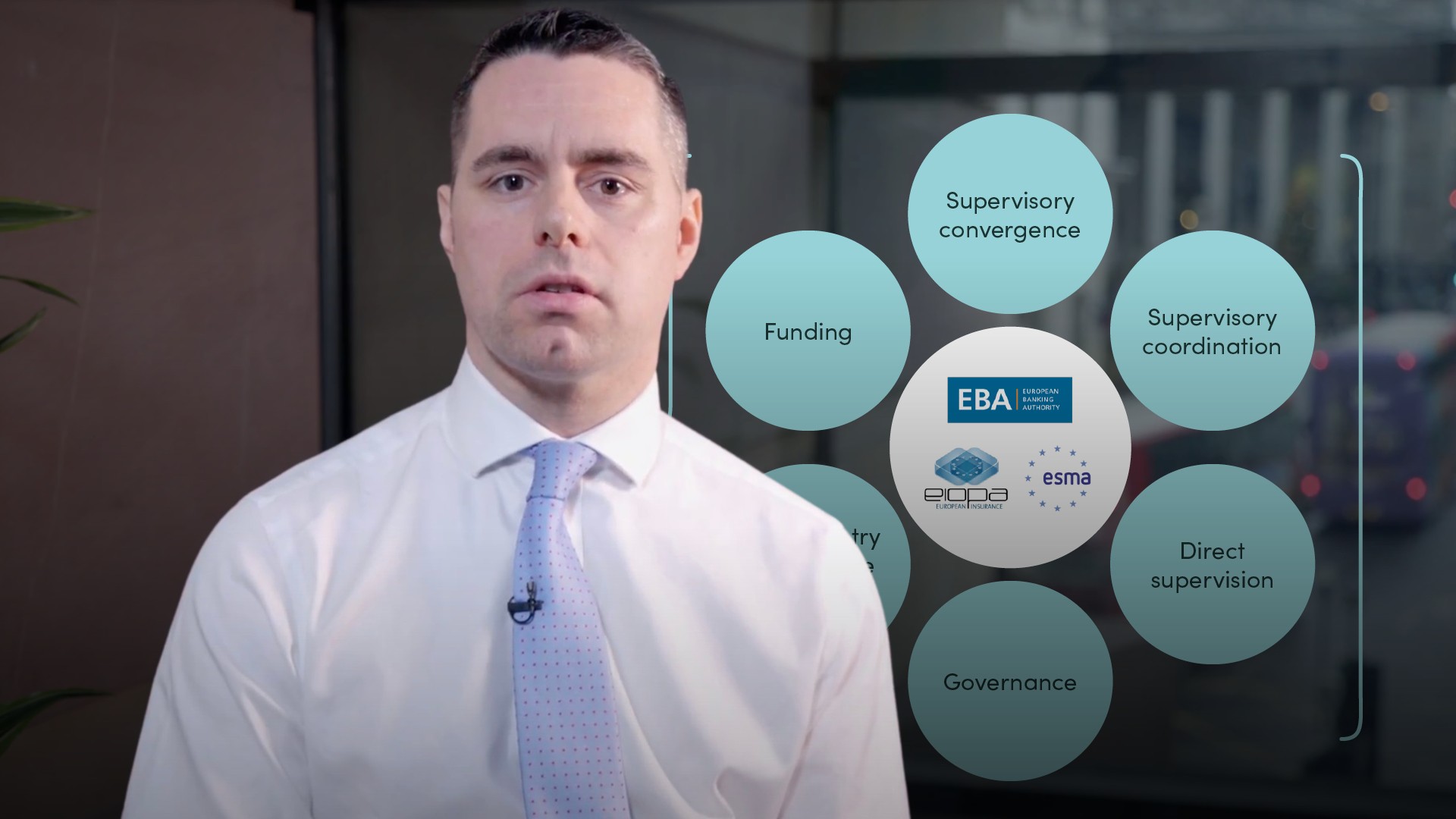
EU Capital Markets Union Initiative

Giles Swan
15 years: Asset management
Giles looks at what is currently relevant and what the future holds in terms of European regulation. He outlines some overarching themes and discusses some recommendations by the European supervisory authorities.
Giles looks at what is currently relevant and what the future holds in terms of European regulation. He outlines some overarching themes and discusses some recommendations by the European supervisory authorities.

EU Capital Markets Union Initiative
11 mins 19 secs
Key learning objectives:
Explain the EU Capital Markets Union initiative
Identify the European Supervisory Authorities review
Define SFTR
Overview:
The overarching themes and initiatives being discussed and pursued by the CMU are financial stability, market reform and the development of a single market.
How is the EU’s regulatory agenda determined?
- EU political and technical input
- European Commission sets out its objectives at the start of the mandate
- European Parliament influences agenda through engagement, including their own initiative reports and recommendations
- The Council of Ministers also sets out the agenda of political leaders
- Member State agendas
What are the overarching themes?
The overarching EU regulatory agenda was set by the EU Commission at the start of the 5-year term. The current commission term started in October 2014.
- Financial Stability - Concluding the reforms that were launched post crisis
- Market Reform - Including the significant MiFID II reforms
- Single Market - Objectives seeking to more closely integrate the European financial markets
Which key initiatives are being pursued?
- Financial Stability - This includes: prudential review of investment firms and a risk reduction package
- Single Market - This includes: Capital Markets Union; review of the European supervisory authorities and financial technology (FinTech)
- Market Reform - This includes: MiFID II and European market infrastructure (EMIR) 2.2
What is the EU Capital Markets Union initiative?
The overarching objective of the CMU is to support the development of a single market and to ensure the following:
- Financing of private/public companies
- Strengthening EU capital markets
- Strengthening bank capacity
- Retail investment
- Sustainable long-term investment
- Cross-border Investment
Which are the key EU initiatives for funds?
- Product Development - PEPP, MMF regulation and EuVECA/EuSEF reviews
- Distribution - Market reforms, sustainable finance package, prudential framework
- Investment - SFTR, securitisation, EMIR, covered bonds and benchmarks
What is the European Supervisory Authorities review?
- ESAs, including ESMA was setup in January 2011
- EU Commission review of operations and proposals for reform in several areas proposed in September 2017
- Still subject to negotiation in Council of Ministers and Parliament
Why are the ESA review proposals relevant for funds?
- Proposed competency for ESMA to issue opinions on the funds’ delegation of material functions outside the EU
- Transfer of supervision of some funds to ESMA from the NCA
- Industry Funding
- Stronger product intervention powers on consumer protection and fin stab grounds
- Third country roles, including equivalence
Which proposals of relevance for funds are in the EU’s sustainable finance agenda?
- Several aspects of sustainable finance agenda
- Action plan and proposals launched by the Commission including advice from the ESAs as to how fund managers and distributors may take account of sustainable finance and ESG aspects
Which issues are being considered under the financial stability agenda that are of relevance to funds?
- Liquidity
- Leverage
- Shadow banking
- Inter-connectedness
- Transparency
- Stress testing
What is the Securities Financing Transactions Regulation (SFTR)?
SFTR is a component of the post crisis reform agenda. There are a range of SFTR types, these include: repo, securities and commodities lending, buy/sell backs and margin lendingThere are three broad sets of obligations:
- Trade Reporting - By SFT counterparties to a trade repository
- Investor Disclosure - Use of SFTs and total return swaps to be disclosed in period reports and pre-sale documents
- Transparency of reuse - Express consent and risk disclosure for any reuse of collateral by SFT counterparties
What is the prudential review of investment firms?
European Commission Proposals in December 2017:- Capital Requirements - This include systemic and non-systemic firms
- Risk Management - This includes governance and remuneration
- Transparency - This includes tax reporting and regulatory reporting
What is on ESMAs current work programme of relevance to funds?
- Exiting legislation including Money Market Fund (MMF) regulation will be supplemented by additional level 2 rules
- EC mandated work on costs and charges of investment funds
Which aspects of fund distribution and fund costs and charges are being examined by the EU Commission?
Capital Markets Union initiative:
- Fostering retail investment
- Facilitating cross-border investment
- Studying distribution systems
- Monitoring fund costs and charges

Giles Swan
There are no available Videos from "Giles Swan"

